iRobot is the world's largest manufacturer of robotic vacuums. Its robovacs are sold under Roomba brand name globally. The problem is that there are tons of different Roomba models out there and Roomba's naming convention is no straightforward.
In this article, we try to clarify how various Roomba models differ from each other - and also to shine some light on Roomba's odd naming conventions. We have reviewed almost all Roomba models that exist, and thus the opinions mentioned on each model / series are based on our extensive reviews.
Naming convention Roomba 600 series Roomba 670 series Roomba e5 series Roomba e6 series Roomba 980 series Roomba 970 series Roomba i3 series Roomba i4 series Roomba i7 series Roomba i6 series Roomba i8+ Roomba s9 series Roomba 500, 700 and 800 series Comparison chart
Model names First of all, Roomba's naming convention can be confusing. The company has improved its game lately in this particular area, but it still causes confusion to consumers all over the world.
If a specific Roomba model has three numbers in its model name, only the first two numbers matter.
That is to say: Roomba 675 is exactly the same device as Roomba 676 is. The last number only indicates that some small details might differ: typically the last number indicates the color but it can simply be a way to determine which retailing giant has exclusive right to sell the specific model - model still being exactly the same as everyone else has, but the last number differs. Sure, in some cases models that have different last numbers might carry a different set of bundled accessories: one model might come with one replacement brush, another one with two. But the vacuum is always the same if the two first numbers match.
However, there's an exception to this rule: Roomba's 600 series, with low digits, where all the models are the same: Roomba 605 is the same as 606 or 620 or 616. Clear, right?
If Roomba's model starts with a letter, only the letter and first number are significant.
For example, Roomba e5 is widely sold also as Roomba e5152 in Europe. But no matter what the numbers are, it is still the very same Roomba e5, the latter numbers don't matter at all. Sure, again, they can indicate either retail channel, number of accessories the device ships with, color - or simply the geographical area the device was aimed for (say, Europe or the United States).
...and finally, the third rule:
If the product name has a plus sign at the end of the model name, it ships with a Clean Base unit.
So, Roomba i7 and Roomba i7+ are technically the same device, but Roomba i7+ ships with the Clean Base dock, which has the auto-emptying feature for emptying the device's dustbin automatically.
For "non-plus" models, you can typically buy a kit separately that has the Clean Base docking station and required parts to modify your non-plus model to work with the Clean Base. But again, the plus model and non-plus model are otherwise exactly the same device.
Roomba 600 series
As of now, the Roomba 600 series is the cheapest entry-level robovac in Roomba's line-up. It is meant for people who are shopping for their first robovac - or don't have the means to use smartphone or don't have WiFi at their home.
Unfortunately, based on our tests, Roomba's 600 series is also the one that we wouldn't recommend getting. In our review of Roomba 605 we noticed that it doesn't do a very good job in cleaning, it has a tendency to stink like .. well, an old vacuum and it had serious problems with all sorts of rugs and carpets.
Key points to know about Roomba's 600 series: Doesn't have recharge and resume option. This means that the vacuum can't continue its job after it runs out of battery. So, basically, it is suitable to small, max 2-bedroom apartments, not to anything bigger than that. Brush type is bristle (as opposed to rubber / silicone in more expensive models). This means basically that it isn't very suitable for a pet home, as untangling the pet hair from bristle brush is a pain. Can't be controlled remotely: doesn't support any sorts of network connectivity. Quite sub-par cleaning results. Can't be scheduled at all. Stinks like an old vacuum.
Roomba 670 series (Roomba 675, 676, ..)
Significantly better than the basic 600 series. Supports network connectivity and can be controlled with a smartphone. Has scheduling options. Better filter: doesn't smell bad, like the 600 series does.
If you're buying your first robovac and just want to try a cheap one first, the Roomba 670 series is a good option there.
Main points: Doesn't have recharge and resume option - suitable for smaller apartments only. Uses bristle brushes - not recommended for pet households. Can be controlled over the internet with a smartphone app. Good cleaning results. Can be scheduled. Roomba e5 series (Roomba e5, e5152, etc)
A very small step up from 670 series. Two main differences when comparing e5 to 670 series: e5 uses rubber / silicone brushes (vs bristle brushes used by 670 series) and has better suction power.
If you're considering between the 670 series and e5, consider these points: if the two cost currently the same, get e5. If you have pets, get e5. If there's a significant price gap (670 being significantly cheaper) and you don't have pets, get 670. They're almost identical, after all.
Roomba e5 key points: Doesn't have recharge and resume option - suitable for smaller apartments only. Uses silicone / rubber brushes, so suits much better for pet home than those that use bristle brushes. Can be controlled over the internet with a smartphone app. Good cleaning results. Can be scheduled.
Roomba e6 Again, just to confuse the living heck out of consumers, the Roomba e6 is actually exactly the same device as Roomba e5. The only differences are that e6 has a different color than e5 and e6 ships with a virtual wall unit, while you have to buy one separately for e5. That's it. No other differences whatsoever.
Roomba 980 series (Roomba 980, Roomba 981, ..)
Roomba 980 series is Roomba's slightly older premium model, dating back to 2017. It is still widely available and has been software updated quite regularly by iRobot, so we added it to the list, too.
Roomba 980 was the first Roomba model to have full mapping features available: it can map the house and continue cleaning if the battery runs out of juice before it gets the entire area cleaned. This means that 980 is suitable also for very large homes, as it can continue its duties even after it has charged itself.
Roomba 980 also happens to be the loudest robovac we have ever tested. Its "carpet mode" feature puts a "turbo boost" to its suction when it detects carpet or a rug - and it sounds a bit like a fighter taking off when it does that.
Roomba 980 is overall an excellent product. Not as good as its successors in Roomba's top-end line, but as the model is currently being phased out, you might get yourself a great deal if you find 980 in deep discount.
Roomba 980 key points: Supports resume and recharge - knows how to continue cleaning after it has charged itself. Suitable for very large homes, too. Very, very good cleaning results. Can be controlled via the internet, using smartphone app Has mapping function: shows the map of where it has cleaned and supports virtual no-go zones that can be created through the smartphone app.
Roomba 970 series (Roomba 971, Roomba 975, ..)
This one is weird. There used to be an older Roomba 970 series back in 2016 or so. But in 2020 Roomba released a new Roomba 970 series that has been available mostly outside the United States only - namely, in Europe and in some Asian countries.
The Roomba 970, the year 2020 edition is basically a slightly toned-down version of the above-mentioned Roomba 980. Most notably, 970 has a smaller battery than 980, it lacks the carpet boost feature and its mapping abilities have been slightly crippled.
It does, however, support the recharge and resume feature, meaning that it can continue its cleaning after it runs out of battery - and thus, is suitable for bigger homes than e5 and other cheaper models.
Roomba 970 key points: Supports resume and recharge - knows how to continue cleaning after it has charged itself. Suitable for very large homes, too. Good cleaning results. Can be controlled via the internet, using smartphone app Has limited mapping functionality: shows the areas it has cleaned, but map can't be edited and doesn't support room-specific cleaning.
Roomba i3 series (Roomba i3, Roomba i3+)
Roomba i3 series was launched back in 2020 as the "higher mid-price" option in Rooomba's lineup. Basically, it is the cheapest Roomba that can have a self-emptying dustbin option.
What is a self-emptying dustbin then? The charging dock of such robovacs has a larger dustbin within the charging dock itself. Once robot has finished vacuuming and its own dustbin is getting full, it empties its own dustbin to the larger dustbin located at the charging station.
Now, here, it is good to remember that the self-emptying dustbin feature comes with the "plus models" only. So, i3+ can empty its own dustbin, but i3 can't. Otherwise, these two models are identical. And the dustbin feature can be upgraded to i3 separately, but it will cost more than the difference in the price of i3 and i3+.
As a vacuum, i3 is basically a stripped-down version of i7 series. A very good vacuum that has remote controlling, scheduling, good cleaning results, recharge and resume feature, and more. However, its mapping abilities have been slightly crippled, just like with 970 series. This means that while you can see the area the vacuum covered, you can't create virtual no-go zones or edit the map, or command your i3 to clean just a specific room.
Roomba i3 main features: Supports resume and recharge - knows how to continue cleaning after it has charged itself. Suitable for very large homes, too. Good cleaning results. Can be controlled via the internet, using smartphone app Has limited mapping functionality: shows the areas it has cleaned, but map can't be edited and doesn't support room-specific cleaning. The "plus" version, i3+, comes with Clean Base and automatic dustbin
Login to add comment
Other posts in this group
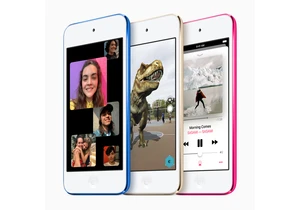
Sure, there were digital music players well before Apple introduced its first iPod back in 2001. But iPod was the device that made digital music a mainstream reality.
It also paved a way for new mus

After the initial developer edition, Google has now launched the first official beta version of Android 13 operating system.
While the developer edition, launched back in February, was meant for .. w
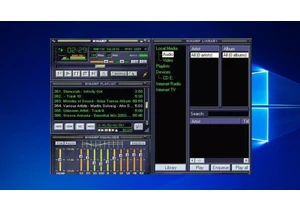
Sometimes history is shaped by small steps, leading into giant leaps. Those steps were taken in late 1990s by several tech companies - and as the result, the entire music business industry went throug
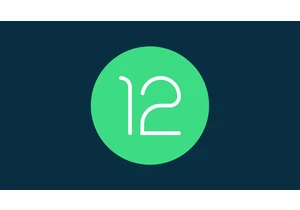
Google introduced a new measure for Android phones with its Android 12 operating system. The new measure, dubbed as Performance class indicates to app developers how good the phone is, performance-wis
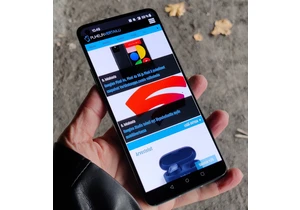
Since late 2020, OnePlus has been struggling to push out its Android updates in timely manner, which has frustrated its loyal fans quite a lot. But finally, some relief is coming: Android 12 goodness
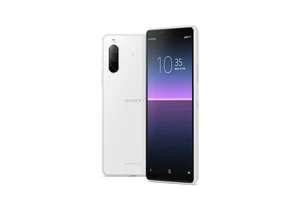
For recent years, Sony, has had a very limited selection of phones available globally. But even with a limited selection, company's track record for delivering Android updates hasn't been exactly a to


